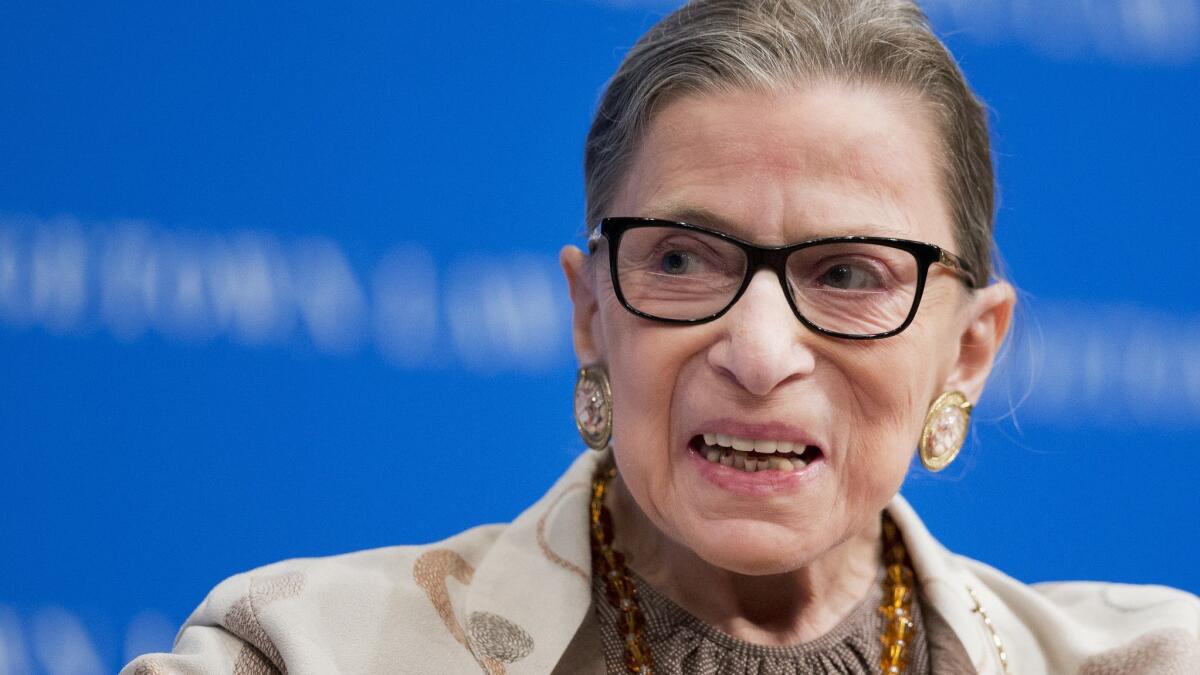New health scare for Justice Ruth Bader Ginsburg as doctors remove cancerous nodules from her lung

Supreme Court Justice Ruth Bader Ginsburg underwent surgery in New York on Friday to remove a lobe of her left lung that had two cancerous nodules.
It was the latest health scare for the court’s 85-year-old liberal leader, but her doctors and other medical experts said her prognosis appeared to be good because the cancer was discovered and removed at an early stage.
The nodules were discovered last month when doctors ran tests on the justice when she was being treated for a rib fracture at George Washington University Hospital.
“Both nodules removed during the surgery were found to be malignant on initial pathology evaluation,” according to the thoracic surgeon who performed the procedure, Dr. Valerie W. Rusch, the court’s statement said. “Post-surgery, there was no evidence of any remaining disease. Scans performed before surgery indicated no evidence of disease elsewhere in the body.”
The surgery took place at Memorial Sloan Kettering Cancer Center in New York. The justice is resting comfortably and is expected to remain at the hospital “for a few days,” the statement said. “Currently, no further treatment is planned,” the statement added.
Doctors urge caution in speculating on a patient’s status based on limited information. But from the information released so far, Ginsburg’s prognosis should be excellent, said Dr. Dan Raz, a thoracic surgeon who heads the lung cancer program at City of Hope in Duarte, Calif.
“The vast majority of times when we operate and do the kind of surgery that she had, these patients have stage 1 cancer, and most of those times they are cured,” Raz said.
Early-stage lung cancer is usually detected accidentally, Raz said, when patients get treatment for another condition, as was true with Ginsburg.
“It’s a very good sign,” he said. “When people develop symptoms of lung cancer, unfortunately, most of the time, they have advanced-stage lung cancer.”
Raz said this sort of lung surgery routinely produces good outcomes even in older patients, especially when they start out in good shape. “Most of the time, patients do very, very well.”
Dr. Jonathan Goldman, a lung cancer specialist at UCLA Health, agreed that Ginsburg’s prognosis should be good “if this is an early stage cancer that has been fully removed.” But he added that “with all stages of lung cancer, there is a meaningful chance of recurrence.” It is also significant, he said, that two nodules were found to be malignant.
Ginsburg has had cancer on two previous occasions and recovered fully.
In 1999, Ginsburg was treated for colorectal cancer, and in 2009 she had an early stage cancer removed from her pancreas. She also had a coronary stent implanted in 2014. And last month, she fell in her office at the court and learned later she had fractured three ribs.
In spite of all this, she has not missed a day of oral arguments in her 25 years on the court. The next set of arguments is scheduled for Jan. 7.
Ginsburg has been out and about in Washington in recent weeks and has spoken at several gatherings. She said she was recovering well from the rib fractures.
On Thursday, she was spotted aboard a Delta flight to New York, and passengers reported she was busy working during the short trip.
A nodule is a hard mass in an otherwise spongy lung tissue, according to lung cancer specialists, who said removing a lobe of the lung is the preferred treatment.
“What they have found is that removing the whole lobe is better than just removing a piece of the lobe because it takes the lymphatic drainage of that area,” said Dr. Stephen Swisher, a thoracic surgeon at MD Anderson Cancer Center in Houston.
In this case, he said, “there were two nodules, so that would be one where you definitely would want to take that lobe, because there’s obviously two areas that are of concern.”
Savage reported from Washington and Rosen from Los Angeles.
More stories from David G. Savage »
Twitter: DavidGSavage
More to Read
Get the L.A. Times Politics newsletter
Deeply reported insights into legislation, politics and policy from Sacramento, Washington and beyond. In your inbox three times per week.
You may occasionally receive promotional content from the Los Angeles Times.








